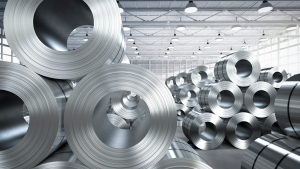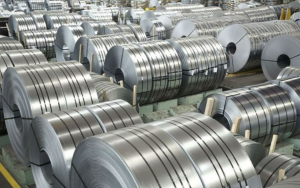Austenitic stainless steel:
Stainless steel with austenitic structure at room temperature. When steel contains approximately 18% Cr, 8%-10% Ni, and approximately 0.1% C, it will have a stable austenite structure. Austenitic chromium-nickel stainless steel includes the famous 18Cr-8Ni steel and the high Cr-Ni series steel developed by increasing the Cr and Ni content and adding Mo, Cu, Si, Nb, Ti and other elements. Austenitic stainless steel is non-magnetic and has high toughness and plasticity, but its strength is low. It cannot be strengthened through phase transformation and can only be strengthened through cold working. If S, Ca, Se, Te and other elements are added, it will have good machinability. In addition to being resistant to corrosion by oxidizing acid media, this type of steel can also be resistant to corrosion by sulfuric acid, phosphoric acid, formic acid, acetic acid, urea, etc. if it contains elements such as Mo and Cu. If the carbon content in this type of steel is less than 0.03% or contains Ti or Ni, its intergranular corrosion resistance can be significantly improved. High-silicon austenitic stainless steel has good corrosion resistance in concentrated nitric acid. Due to its comprehensive and good comprehensive properties, austenitic stainless steel has been widely used in various industries.
Ferritic stainless steel:
Stainless steel with a mainly ferrite structure under use. The chromium content is between 11% and 30%, and it has a body-centered cubic crystal structure. This type of steel generally does not contain nickel, and sometimes contains a small amount of Mo, Ti, Nb and other elements. This type of steel has the characteristics of large thermal conductivity, small expansion coefficient, good oxidation resistance, and excellent stress corrosion resistance. It is mostly used to make atmospheric-resistant steel. , parts corroded by steam, water and oxidizing acids. This type of steel has shortcomings such as poor plasticity, significantly reduced plasticity and corrosion resistance after welding, which limits its application. The application of outside-furnace refining technology (AOD or VOD) can greatly reduce interstitial elements such as carbon and nitrogen, thus making this type of steel widely used.
Austenitic-ferritic duplex stainless steel:
It is a stainless steel with approximately half austenite and half ferrite structures. In the case of low C content, the Cr content is 18%-28% and the Ni content is 3%-10%. Some steels also contain alloying elements such as Mo, Cu, Si, Nb, Ti, and N. This type of steel has the characteristics of both austenitic and ferritic stainless steel. Compared with ferrite, it has higher plasticity and toughness, no room temperature brittleness, significantly improved intergranular corrosion resistance and welding performance, while maintaining iron content. The solid stainless steel is brittle at 475°C, has high thermal conductivity, and has superplasticity and other characteristics. Compared with austenitic stainless steel, it has high strength and significantly improved resistance to intergranular corrosion and chloride stress corrosion. Duplex stainless steel has excellent pitting corrosion resistance and is also a nickel-saving stainless steel.
Martensitic stainless steel:
Stainless steel whose mechanical properties can be adjusted through heat treatment is, in layman’s terms, a type of hardenable stainless steel. Typical grades are Cr13 type, such as 2Cr13, 3Cr13, 4Cr13, etc. The hardness after tempering is high, and different tempering temperatures have different combinations of strength and toughness. It is mainly used in steam turbine blades, tableware, and surgical instruments. According to differences in chemical composition, martensitic stainless steel can be divided into two categories: martensitic chromium steel and martensitic chromium-nickel steel. According to different structures and strengthening mechanisms, it can also be divided into martensitic stainless steel, martensite and semi-austenitic (or semi-martensite) precipitation hardening stainless steel, and maraging stainless steel.
Original surface: NO.1
Those that have been heat treated and pickled after hot rolling are often used for general heat and corrosion resistance, such as chemical tanks, etc., and the thickness is thicker from 2.0MM to 8.0MM.
Blunt: 2D
Those that have been heat treated and pickled after cold rolling have a soft material and a silvery white luster on the surface, and are used for deep drawing processing, such as automobile components, water pipes, etc.
Matte: 2B
After cold rolling, it is heat treated, pickled, and then finished rolled to make the surface moderately bright. Because the surface is smooth, it is easy to re-grind, making the surface brighter, and can be used in a wide range of applications, such as tableware, building materials, etc.
Bright side: BA
Those that have been subjected to gloss heat treatment after cold rolling have a brighter surface and are often used in electrical appliances, kitchen utensils, architectural decoration, etc.
Wool silk surface: HAIR LINE
It is processed by grinding materials with appropriate particle size to form continuous stripes. It is often used in building decorations such as elevators, escalators, etc., and has a wide range of uses.
Fine sand: NO.4
Those who process grinding materials with a particle size of 150-180 are often used in milk food processing equipment, medical equipment, etc.
Coarse sand: NO.3
Those who process abrasive materials with a particle size of 100-120 are often used in milk food processing equipment and kitchen utensils.



